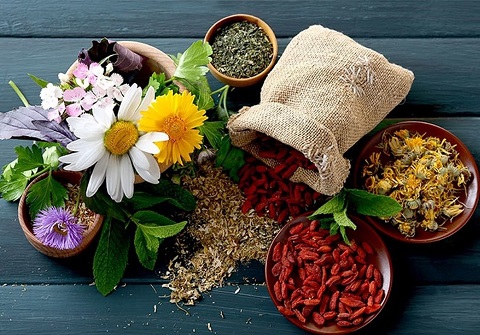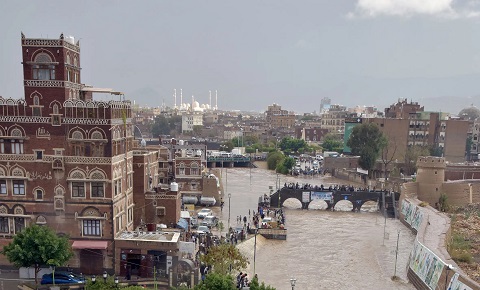1. Business Insights
Sending business insights: t.me/Arad102
🍀 The city of Shiraz in Fars province is one of the hubs for medicinal plant exports.
🌿 The export of Iranian medicinal plants to other countries has seen a significant increase since the establishment of purification centers and the production of medicinal plant extracts based on global standards.
🍃 Currently, medicinal plant extracts from Iran are exported to countries such as the Netherlands, Germany, France, India, the USA, Spain, and even China, which is itself a medicinal plant hub.
https://instagram.com/aradbranding.en

✅ Among disposable containers, aluminum containers are the most commonly used.
🔶 A large portion of production in Iran is dedicated to aluminum disposable containers, providing a foundation for exporting these products.
🔴 These products, with their unique features such as high heat resistance, are the best option for transporting hot foods, and they have a large following in many countries around the world.

🐔 The trade of chicken feet from Iran is mainly directed to Southeast Asian countries like China and Vietnam.
📌 These countries are large markets due to the high consumption of chicken feet in local dishes and industrial uses.
📍 Other countries like Malaysia and Thailand are also considered buyers of Iranian chicken feet, and this trade can be profitable for Iranian exporters due to the low prices and easy access to raw materials in Iran.

🔶 Indonesia, due to its geographical position, has several ports and small docks, totaling 1,700.
🔺 Jakarta, the capital and largest city of Indonesia, is a key center for education and industry.
💬 Jakarta Port has 20 terminals for handling general cargo, liquid bulk, dry bulk, containers, and more. It offers specialized facilities for oil tankers, ships carrying chemicals, scrap metal, and passengers.

💬 A significant principle in Chinese negotiations, differing notably from Western cultures, is the importance of relationship-building, known as guanxi.
👥 In China, negotiations often involve substantial time getting to know each other to ensure trust and respect, which can include dinner invitations, gift exchanges, or informal conversations.
✅ In contrast, Western cultures focus more on formal contracts and agreements, with less time spent on informal relationships before deals are made.

📦 Currently, the European Union is seeing a demand for packaging products with minimal use of plastic, paper, and cardboard.
✒️ Most Europeans prefer packaging that minimizes waste and causes the least harm to the environment.
🔷 As a result, minimalistic and durable packaging is gaining more appeal.

🌊 The Democratic Republic of Algeria, located in North Africa, is bordered by the Mediterranean Sea to the north, with 95% of its foreign trade conducted through maritime transport.
☑️ Algeria has 13 major commercial ports that handle the country's international trade needs.
🔺 Of these, 8 ports handle general goods, 3 are mixed-use, and 2 serve as energy ports.

❎ The Republic of Guinea, located in West Africa along the Atlantic coast, has Conakry as its capital.
◼️ The port of Conakry is Guinea’s main commercial port, handling 90% of the country’s foreign trade.
🇬🇳 Its strategic geographical position allows it to export key commodities such as bauxite, alumina, and seafood.

📌 In saffron exports, one of the key commercial considerations is maintaining quality and international standards.
💭 Saffron, as a valuable product, must have proper and hygienic packaging and meet the quality standards of the destination countries.
⭕ Researching target markets and creating strong distribution networks in these countries can aid in successful saffron exports. Digital marketing and branding are also crucial factors in this field.

🇲🇱 Mali, a landlocked country, relies on the ports of neighboring countries for its imports.
✔️ Key ports include Abidjan in Ivory Coast, Dakar in Senegal, Tema in Ghana, and Lomé in Togo, which handle goods from Europe, Asia, America, and other regions.
⬅️ In addition to these sea ports, Mali utilizes inland ports along the Niger and Senegal rivers to facilitate internal and regional trade.

💰 In the first five months of this year, nearly 37 million tons of goods valued at $25.1 billion were exchanged between Iran and BRICS members.
💴 During this period, over 70.3 million tons of non-oil goods were traded between Iran and the world.
🪙 Of these, 27.7 million tons were non-oil exports from Iran to 10 BRICS Plus countries, accounting for 50% of the weight and 47% of the value of Iran’s total exports worldwide.

🇾🇪 Yemen is rich in natural resources, but its production and exports have been limited due to unfavorable economic and security conditions.
⬅️ The country’s most important exports include crude oil, petroleum products, and agricultural goods such as coffee, khat (a stimulant plant), and fish.
🔵 If stability is achieved and reconstruction occurs, Yemen holds potential in sectors like tourism, fishing, and agricultural production.

